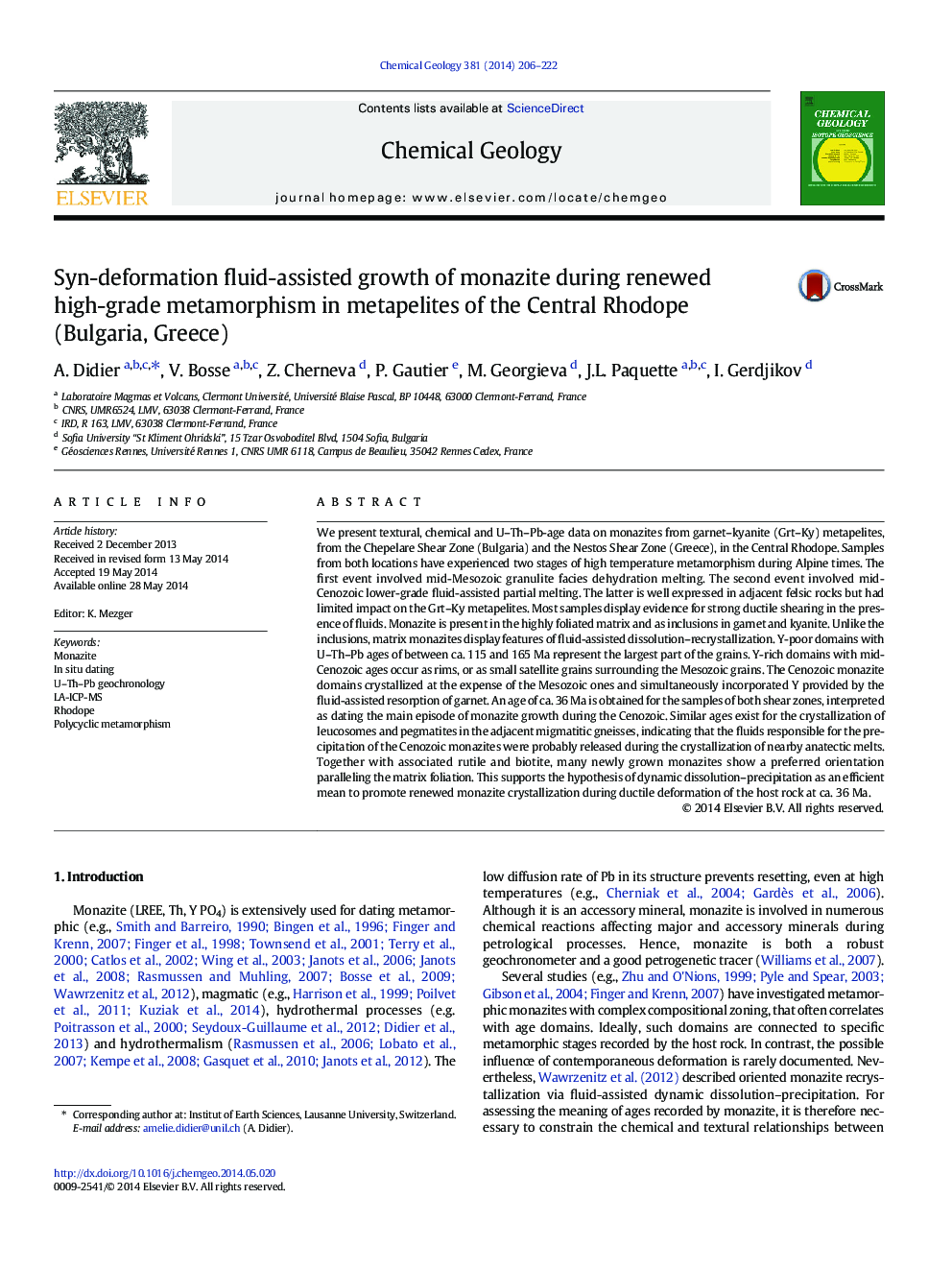| کد مقاله | کد نشریه | سال انتشار | مقاله انگلیسی | نسخه تمام متن |
|---|---|---|---|---|
| 6436619 | 1637591 | 2014 | 17 صفحه PDF | دانلود رایگان |

- Monazites display features of fluid-assisted dissolution-recrystallisation during deformation and chemical and age zoning.
- Y, and HREE-rich M2 Cenozoic monazites crystallized at the expense of the Y, HREE-poor M1 monazite.
- Monazite is able to record selectively distinct high-temperature events in a polycyclic metamorphic evolution.
- Dissolution-precipitation creep is an efficient mean to promote renewed monazite crystallization during deformation.
We present textural, chemical and U-Th-Pb-age data on monazites from garnet-kyanite (Grt-Ky) metapelites, from the Chepelare Shear Zone (Bulgaria) and the Nestos Shear Zone (Greece), in the Central Rhodope. Samples from both locations have experienced two stages of high temperature metamorphism during Alpine times. The first event involved mid-Mesozoic granulite facies dehydration melting. The second event involved mid-Cenozoic lower-grade fluid-assisted partial melting. The latter is well expressed in adjacent felsic rocks but had limited impact on the Grt-Ky metapelites. Most samples display evidence for strong ductile shearing in the presence of fluids. Monazite is present in the highly foliated matrix and as inclusions in garnet and kyanite. Unlike the inclusions, matrix monazites display features of fluid-assisted dissolution-recrystallization. Y-poor domains with U-Th-Pb ages of between ca. 115 and 165Â Ma represent the largest part of the grains. Y-rich domains with mid-Cenozoic ages occur as rims, or as small satellite grains surrounding the Mesozoic grains. The Cenozoic monazite domains crystallized at the expense of the Mesozoic ones and simultaneously incorporated Y provided by the fluid-assisted resorption of garnet. An age of ca. 36Â Ma is obtained for the samples of both shear zones, interpreted as dating the main episode of monazite growth during the Cenozoic. Similar ages exist for the crystallization of leucosomes and pegmatites in the adjacent migmatitic gneisses, indicating that the fluids responsible for the precipitation of the Cenozoic monazites were probably released during the crystallization of nearby anatectic melts. Together with associated rutile and biotite, many newly grown monazites show a preferred orientation paralleling the matrix foliation. This supports the hypothesis of dynamic dissolution-precipitation as an efficient mean to promote renewed monazite crystallization during ductile deformation of the host rock at ca. 36Â Ma.
Journal: Chemical Geology - Volume 381, 14 August 2014, Pages 206-222